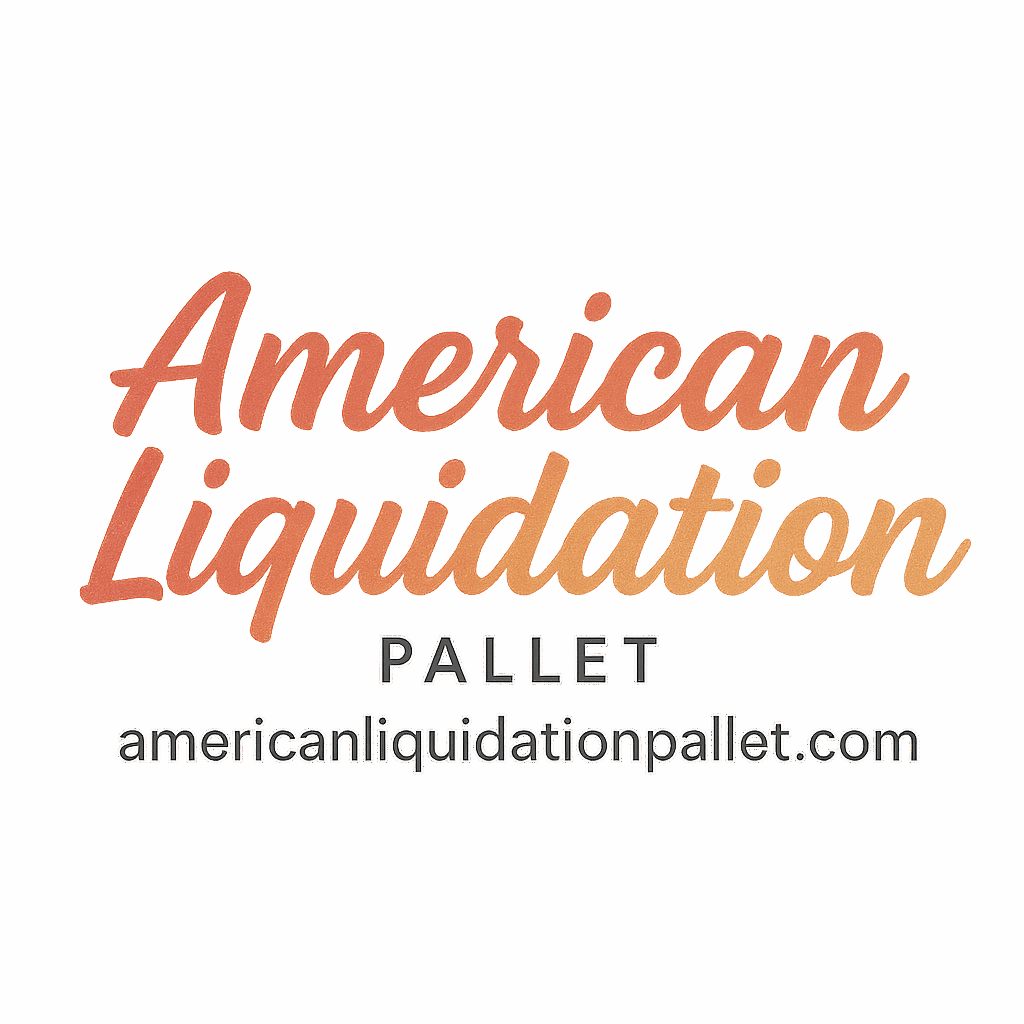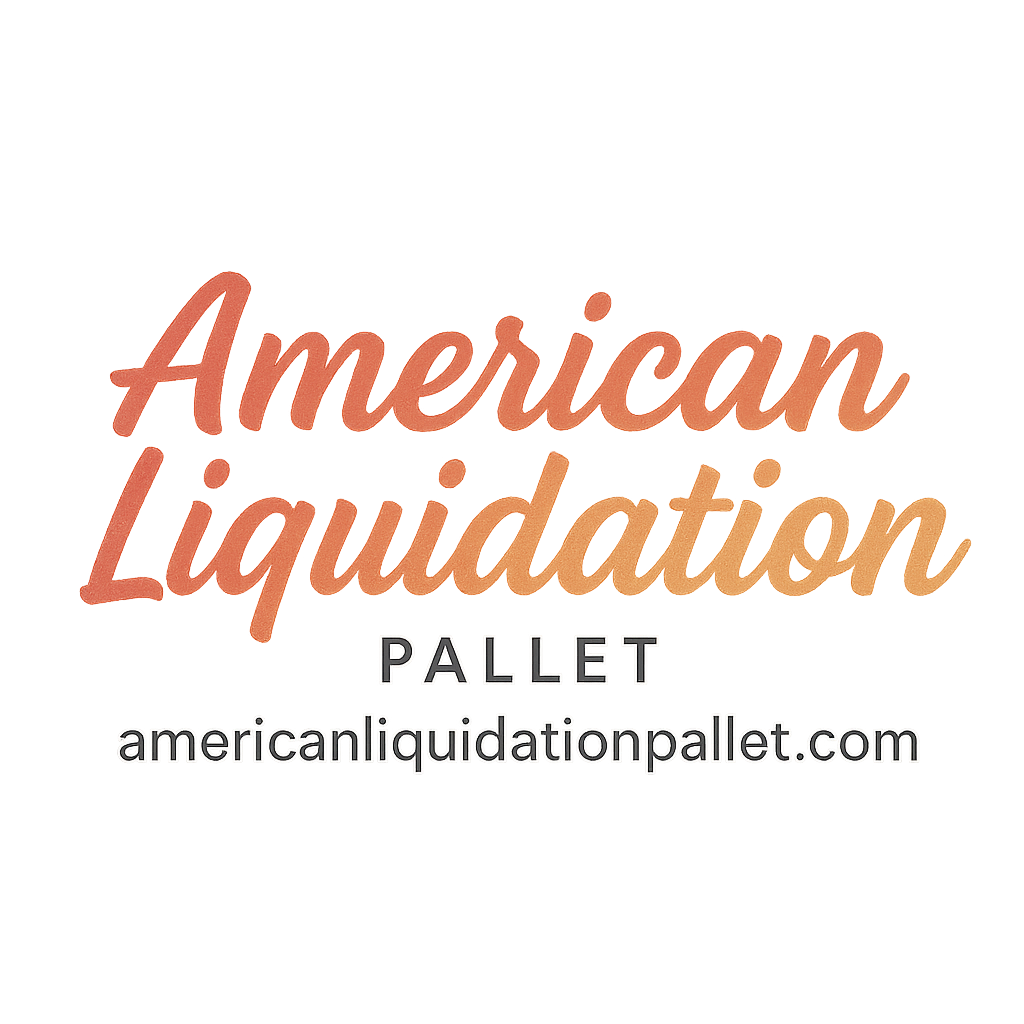Introduction
Diving into the liquidation game can feel like opening a mystery box. You know there’s potential profit inside, but you’re not quite sure what you’re going to get. That’s the thrill—and sometimes the risk—of American liquidation pallets. But here’s the good news: there are tried-and-true ways to evaluate the quality of those pallets before you dive in headfirst. In this article, we’ll cover the top 5 ways to evaluate the quality of American liquidation pallets, so you don’t end up with a dud.
Let’s dig in and help you stack your garage or warehouse with sellable, profitable inventory.
1. Research the Source of the Liquidation Pallet
Before you even think about the contents, think about where the pallet comes from. Not all liquidation suppliers are created equal.
Branded Retailers vs. Unknown Suppliers
Buying from trusted retail giants like Amazon, Walmart, or Target through reliable liquidation platforms gives you an edge. These companies often sell returns and shelf-pulls that are lightly used or even brand new. On the other hand, buying from unknown or unverified sources can be a total gamble.
🛒 Pro Tip: Start with suppliers vetted on platforms like American Liquidation Pallet.
Verified Liquidation Channels
There are two main routes: direct from the retailer or through verified brokers. Both can work, but transparency is key.
Check out:
Related Resources
2. Inspect Product Manifest (If Available)
Ever bought a mystery pallet and ended up with 500 phone cases for a model discontinued three years ago? Yeah, let’s avoid that.
Why Manifests Matter
A product manifest is your crystal ball. It lists the items, condition, quantities, and sometimes even retail value. While not all pallets come with manifests, if one is available—study it like your profit depends on it. Because it does.
Spotting Red Flags in a Manifest
Watch out for vague descriptions like “assorted electronics” or “general merchandise.” Look for specific product names, model numbers, and retail values.
Understanding Product Categories and Conditions
Some terms you might see:
- Shelf-pulls: Usually new, unsold items.
- Customer returns: Mixed bag—some gold, some junk.
- Salvage: Damaged or defective items. Proceed with caution.
📚 For a deeper look, visit Tips, Trends, and Strategies.
3. Assess the Packaging and Labeling
Packaging tells a story. Sometimes it screams “I’m brand new!” Other times it whispers, “I’m a hot mess.”
Original Packaging vs. Repackaged Goods
Items in original, unopened packaging are ideal. They’re easier to resell and often in pristine condition. Repackaged goods can still have value, but they typically show signs of wear or are customer returns.

Reading Return Labels and Tags
Check for:
- “Defective” or “Opened” labels.
- Store return stickers—these can indicate shelf-pulls or overstock.
Clues from Packaging Quality
- Crushed corners? Water stains? These might mean improper storage or transport.
- Neatly shrink-wrapped pallets usually mean better care in handling.
4. Evaluate the Pallet Condition Upon Arrival
You’ve clicked “buy” and the pallet has landed at your door. Now what?
Signs of Mishandling or Water Damage
If it looks like the pallet fell off a forklift or took a swim, take pictures immediately. Report any issues to the seller. Quality suppliers will offer a resolution, but shady ones won’t.
Estimating Salvage vs. Sellable Ratio
Let’s say you’ve got a pallet of 100 items:
- 60 are in brand-new condition ✅
- 20 are slightly used or have minor packaging issues ⚠️
- 20 are damaged or unsellable ❌
That’s a 60% sellable ratio—not bad. Anything over 50% is typically decent, but aim for 70–80% from trusted sellers.
Taking Inventory at Delivery
Make a list of:
- Item names
- Condition
- Quantity
- Potential resale value
📝 Tip: This is where tracking success like Case Studies becomes helpful.
5. Analyze Previous Customer Reviews and Seller Ratings
What are other resellers saying?
Why Seller Ratings Matter
High ratings mean happy flippers. Look for reviews mentioning:
- Packaging quality
- Accuracy of product descriptions
- Communication
- Resolution of issues
💬 Trustpilot, Facebook Groups, and Reddit are great places to gather real-world experiences.
Community Feedback and Case Studies
Seeing how others flipped similar pallets can inspire and guide you. Some even share their profits and losses.
✅ Dive into:
Bonus Tip: Test a Small Batch First
Don’t put all your eggs—or dollars—in one pallet.
The Power of Sampling
Start small. Order one or two pallets, evaluate, resell, and assess profitability. If you like the results, scale up.
Minimizing Risk with Test Orders
Testing helps you understand:
- Your niche
- What sells fastest
- Where to source consistently
Want to target Gen Z or Facebook buyers? Visit:
Conclusion
Buying American liquidation pallets isn’t about luck—it’s about strategy. By evaluating the supplier, scrutinizing manifests, checking packaging, inspecting pallet condition, and reading seller reviews, you can dramatically increase your chances of turning a profit.
The liquidation game is booming—especially with platforms like American Liquidation Pallet guiding the way. Whether you’re a newbie or seasoned flipper, use these five methods to make smarter, safer sourcing decisions and start stacking wins.
FAQs
1. How do I know if a liquidation pallet is worth buying?
Look at the manifest (if available), seller reviews, pallet condition, and past customer feedback. Always evaluate risk vs. potential resale profit.
2. Are liquidation pallets from Amazon good quality?
Often, yes. Amazon liquidation pallets are known to include customer returns, overstocks, and shelf-pulls—many items are new or lightly used.
3. What’s the best way to avoid buying junk pallets?
Stick to verified suppliers, read manifests, and avoid vague product listings. Start with small test purchases to minimize risk.
4. Can I make money flipping liquidation pallets on eBay or Facebook?
Absolutely! Many resellers use platforms like eBay and Facebook Marketplace to resell items for a profit.
5. What does “shelf-pull” mean in liquidation?
Shelf-pulls are unsold items taken off retail shelves—usually new, clean, and very resellable.
6. Should beginners avoid salvage pallets?
Yes, unless you know how to refurbish or salvage parts. Beginners should stick with manifested or shelf-pull pallets to reduce risk.
7. Where can I learn more about flipping liquidation goods?
Explore the American Liquidation Pallet Blog and follow tags like #beginner-tips, #competitive-edge, and #selling-platforms.


